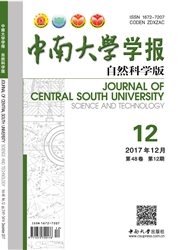

 中文摘要:
中文摘要:
以往的现场刚性承压板压缩蠕变试验中都假设岩体变形为黏弹性变形,然后推求岩体的蠕变变形公式,并结合最小二乘法反演获得蠕变参数,这种方法由于进行了黏弹性变形的假设从而无法考虑岩体的黏塑性变形,为此,采用粒子群智能算法的数值反演方法进行研究,并且提出将流变模型中控制瞬时变形和时效变形的2种参数分开反演的二次粒子群算法。研究结果表明:采用这种方法可以有效地减小反演的难度,提高了反演精度;将此方法应用于现场压缩蠕变试验的参数反演,拟合时效变形参数曲线与试验曲线较吻合,从而可获得相应的流变参数。
 英文摘要:
英文摘要:
In the previous research of in-situ compressive creep test using rigid bearing plate, the deformation of rock mass was always assumed to be visco-elastic deformation, and in this work the creep deformation equation is deduced, and the creep parameters are inversed with least-squares method. This method which assumed the deformation of rock mass in the compressive creep test is visco-elastic deformation does not consider the visco-plastic deformation. Based on the particle swarm intelligence algorithm, the numerical inversion method was used which was more in line with the actual situation.The secondary particle swarm optimization for rheological parameters inversion in which the instantaneous parameters and time-controlled parameters were separately inversed was proposed, and this method was applied in the in-situ compressive creep test. The results show that the methods can reduce the difficulty of the inversion and improve the accuracy. Example results verify the credibility of program compiling. The fitting curves are in good agreement with the experimental curves, which indicates that the model is correct and reasonable, and the rheological parameters are inversed.
 同期刊论文项目
同期刊论文项目
 同项目期刊论文
同项目期刊论文
 期刊信息
期刊信息
